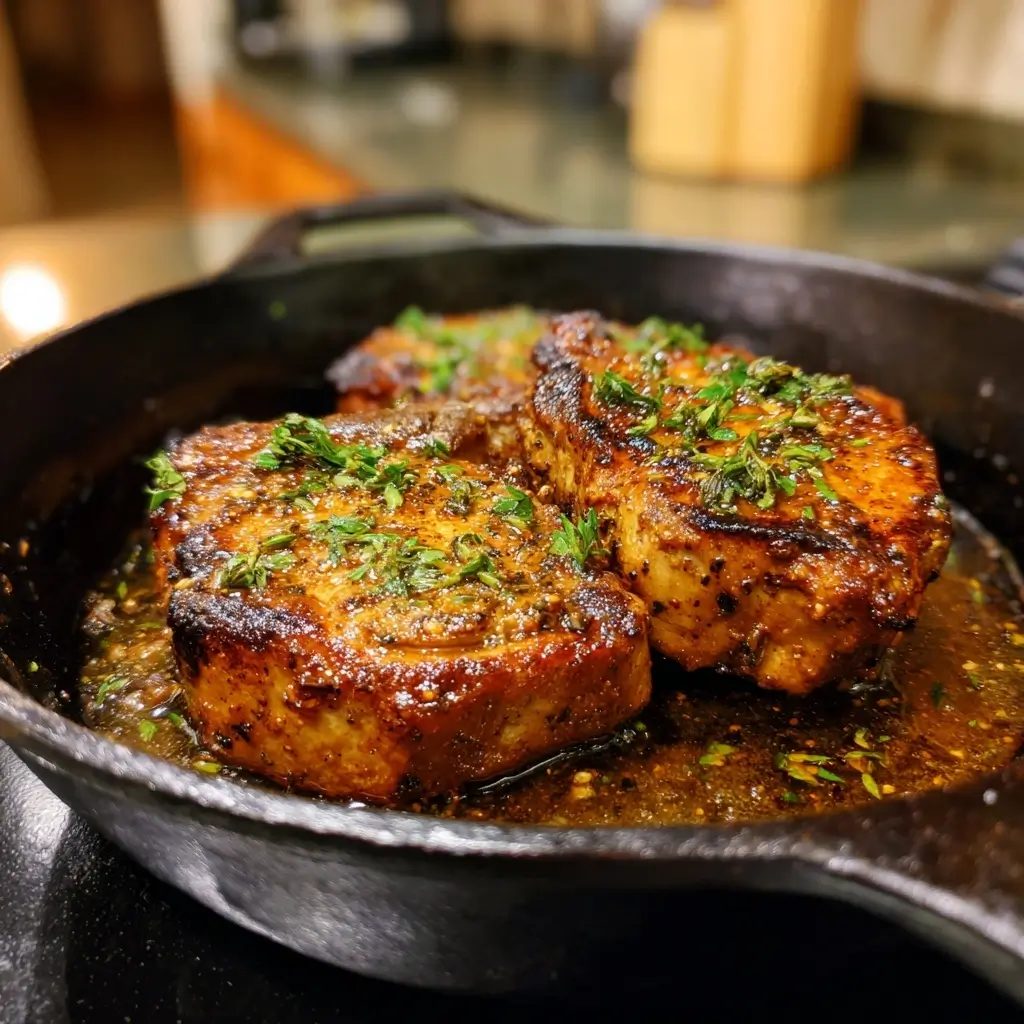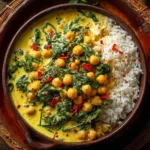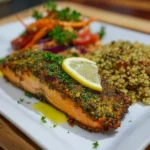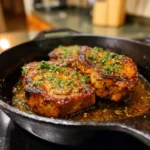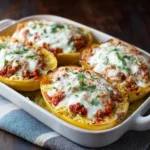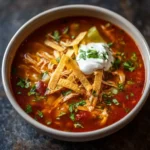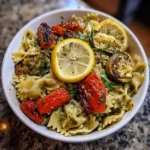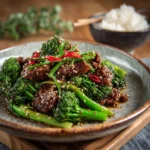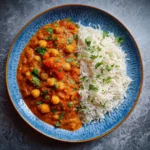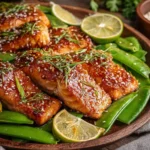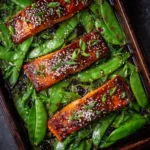Introduction
If you’re looking for a delicious, healthy, and satisfying main course that’s both easy to prepare and bursting with flavor, then Honey Dijon Pork-free Turkey Chops are the perfect choice. This recipe swaps traditional pork chops for tender turkey cutlets or turkey steaks—offering a leaner, lighter alternative without sacrificing taste. With its sweet and tangy glaze, this dish brings together gourmet flavors in a family-friendly format suitable for weeknight dinners or impressing guests at weekend gatherings. Whether you’re following a halal, kosher, or simply pork-free lifestyle, this recipe delivers on all fronts: flavor, nutrition, and ease.
The History
The concept of meat chops glazed with mustard and honey dates back centuries, rooted in European culinary traditions where preserved meats were enhanced with bold, robust sauces. In France, Dijon mustard—named after the town of Dijon in Burgundy—has been a staple since the 13th century, originally made from brown or black mustard seeds, verjuice (the acidic juice of unripe grapes), and later wine. The addition of honey to mustard-based sauces became popular during the Renaissance as sugar and sweeteners gained wider availability across Europe.
In modern times, the Honey Dijon combination has become synonymous with balanced flavor: the sharpness of mustard cutting through the sweetness of honey. While traditionally paired with pork chops—especially in German, French, and American Southern cooking—the shift toward dietary inclusivity has inspired creative substitutions. Enter turkey chops: a lean, flavorful, and versatile protein ideal for those avoiding pork due to religious, ethical, or health reasons. This adaptation maintains the essence of the classic dish while embracing contemporary tastes and dietary needs, making it a standout in today’s diverse culinary landscape.
Ingredients Breakdown
The beauty of this recipe lies in its simplicity and accessible ingredients, each playing a key role in building layers of flavor and texture:
- Turkey Chops/Cutlets: Boneless turkey cutlets or turkey steaks serve as the base. These are typically thin, quick-cooking slices of turkey breast, offering mild flavor and tender texture when not overcooked.
- Dijon Mustard: Adds tanginess and depth, acting as both a flavor enhancer and binding agent for the glaze. Authentic Dijon provides a smooth, slightly spicy kick.
- Honey: Balances the mustard’s acidity with natural sweetness. It also helps caramelize the surface during cooking, creating a glossy finish.
- Olive Oil: Used for searing and preventing sticking. It adds richness and helps distribute heat evenly.
- Garlic (fresh or minced): Imparts aromatic warmth and complexity to the sauce.
- Fresh Lemon Juice: Brightens the dish and enhances the overall flavor profile with a touch of acidity.
- Dried Thyme and Rosemary: Earthy herbs that complement poultry exceptionally well, adding subtle woodsy notes.
- Salt and Black Pepper: Essential seasonings that elevate all other flavors.
- Onion Powder (optional): Adds umami depth without overpowering the dish.
- Low-Sodium Chicken Broth (or vegetable broth): Used to deglaze the pan and create a light sauce, ensuring moisture and flavor retention.
- Cornstarch (optional, for thickening): Helps turn the pan drippings into a silky sauce if desired.
All ingredients are commonly found in most kitchens and can be easily substituted based on preference or dietary restrictions.
Step-by-Step Recipe
- Prepare the Turkey: Start by patting the turkey chops dry with paper towels. This ensures better browning. Season both sides lightly with salt, pepper, onion powder, and dried thyme.
- Make the Honey Dijon Glaze: In a small bowl, whisk together 3 tablespoons Dijon mustard, 2 tablespoons honey, 1 tablespoon olive oil, 1 teaspoon lemon juice, 1 minced garlic clove, ½ teaspoon dried rosemary, and a pinch of black pepper. Mix until smooth and emulsified.
- Marinate (Optional but Recommended): Brush the glaze generously over both sides of the turkey chops and let them marinate for 20–30 minutes at room temperature, or up to 2 hours in the refrigerator for deeper flavor infusion.
- Preheat the Pan: Heat 1 tablespoon of olive oil in a large skillet (preferably non-stick or stainless steel) over medium-high heat until shimmering but not smoking.
- Sear the Turkey: Add the turkey chops to the hot pan. Cook for 3–4 minutes per side, depending on thickness, until golden brown and cooked through. Internal temperature should reach 165°F (74°C). Avoid overcrowding the pan; cook in batches if necessary.
- Glaze and Finish: Reduce heat to low. Spoon the remaining Honey Dijon mixture over the chops. Let it simmer gently for another 1–2 minutes, allowing the glaze to caramelize slightly without burning.
- Create a Pan Sauce (Optional): Remove the turkey and set aside. Add ¼ cup low-sodium chicken broth to the same pan, scraping up any browned bits. Bring to a simmer. For a thicker sauce, mix 1 teaspoon cornstarch with 1 tablespoon water and stir into the broth. Cook until slightly reduced and glossy. Return the turkey to the pan briefly to coat in sauce.
- Serve Immediately: Plate the turkey chops and drizzle with extra sauce. Garnish with fresh parsley or lemon zest for a pop of color and freshness.
Tips
- Don’t Overcook: Turkey is very lean and dries out quickly. Use a meat thermometer to ensure internal temperature reaches exactly 165°F. Remove from heat just before it gets there, as residual heat will carry the temp upward.
- Use Fresh Garlic: Pre-minced jarred garlic works in a pinch, but fresh garlic delivers superior aroma and flavor.
- Rest Before Serving: Let the turkey rest for 3–5 minutes after cooking to allow juices to redistribute, resulting in moister meat.
- Baste During Cooking: For an even richer glaze, baste the chops with the pan juices or extra glaze halfway through cooking.
- Boost Flavor with Herbs: Add a sprig of fresh thyme or rosemary to the pan while cooking for aromatic depth.
- Double the Glaze: If you love extra sauce for serving or leftovers, consider doubling the Honey Dijon mixture—half for marinating, half reserved for finishing.
- Room Temperature Start: Take turkey out of the fridge 15–20 minutes before cooking to ensure even searing.
- Non-Stick Matters: Especially with delicate turkey cutlets, using a quality non-stick or well-seasoned pan prevents tearing and sticking.
Variations and Customizations
This recipe is highly adaptable to suit different palates, diets, and occasions:
- Spicy Kick: Add ½ teaspoon smoked paprika or a few dashes of cayenne pepper to the glaze for heat. Alternatively, use a spicy brown mustard instead of Dijon.
- Herb-Forward Version: Replace dried herbs with chopped fresh tarragon, sage, or thyme for a more vibrant herbal note.
- Orange-Honey Twist: Substitute lemon juice with fresh orange juice and add a teaspoon of grated orange zest for a citrus-forward variation.
- Maple-Dijon Option: Swap honey for pure maple syrup for a deeper, earthier sweetness—ideal for fall and winter meals.
- Dairy-Free & Vegan-Friendly Adaptation: Use plant-based turkey substitutes like soy-based cutlets or seitan. Ensure all other ingredients (like broth) are vegan-certified.
- Grilled Version: Instead of pan-searing, grill the marinated turkey chops over medium heat for smoky char marks. Baste with glaze during the last few minutes.
- Oven-Baked Method: Place marinated chops on a lined baking sheet and bake at 375°F (190°C) for 18–22 minutes, brushing with glaze halfway through.
- Sheet Pan Dinner: Arrange turkey chops alongside vegetables like carrots, Brussels sprouts, or sweet potatoes. Drizzle everything with olive oil and glaze, then roast together for a one-pan meal.
- Kid-Friendly Makeover: Reduce mustard amount slightly and increase honey for a sweeter profile children may prefer.
Health Considerations and Nutritional Value
Honey Dijon Pork-free Turkey Chops are not only delicious but also align well with various health-conscious lifestyles. Here’s why:
- Lean Protein Source: Turkey is rich in high-quality protein, essential for muscle repair, satiety, and metabolic function, with significantly less saturated fat than pork.
- Lower in Calories: A 4-ounce serving of boneless turkey breast contains approximately 120–140 calories, making it ideal for weight management plans.
- Nutrient-Dense: Turkey provides important nutrients such as niacin (B3), vitamin B6, selenium, zinc, and phosphorus—all vital for energy metabolism and immune support.
- Heart-Healthy Fats: Using olive oil introduces monounsaturated fats, which are beneficial for cardiovascular health.
- Natural Sweetener: Raw honey, when used in moderation, offers antioxidants and anti-inflammatory properties compared to refined sugars.
- Low-Carb & Keto-Compatible: With minimal carbohydrates (especially if cornstarch is omitted), this dish fits well within low-carb and ketogenic diets.
- Gluten-Free Friendly: As long as gluten-free certified Dijon mustard is used (some brands contain vinegar with gluten traces), this recipe is naturally gluten-free.
- Sodium Control: By using low-sodium broth and limiting added salt, this dish supports heart health and blood pressure management.
That said, individuals managing diabetes should monitor honey intake and consider substituting with monk fruit syrup or erythritol-based honey alternatives. Always consult with a healthcare provider or dietitian for personalized advice.
Ingredients
- 4 boneless turkey chops or cutlets (about 4 oz each)
- 3 tbsp Dijon mustard (gluten-free if needed)
- 2 tbsp raw honey (or substitute of choice)
- 2 tbsp olive oil (divided)
- 1 clove garlic, minced
- 1 tbsp fresh lemon juice
- ½ tsp dried thyme
- ½ tsp dried rosemary (crushed)
- ¼ tsp black pepper
- ½ tsp salt (adjust to taste)
- ¼ cup low-sodium chicken or vegetable broth
- 1 tsp cornstarch (optional, for sauce thickening)
- Fresh parsley or lemon zest (for garnish)
Directions
- In a mixing bowl, combine Dijon mustard, honey, 1 tablespoon olive oil, lemon juice, minced garlic, thyme, rosemary, black pepper, and a pinch of salt. Whisk until smooth.
- Place turkey chops in a shallow dish and pour half of the glaze over them, turning to coat both sides. Marinate for 20–30 minutes at room temperature (or refrigerate up to 2 hours).
- Season both sides of the turkey with salt and pepper.
- Heat 1 tablespoon olive oil in a large skillet over medium-high heat.
- Add turkey chops (do not overcrowd; cook in batches if needed) and sear for 3–4 minutes per side, until golden and internal temperature reaches 165°F.
- Reduce heat to low. Spoon the reserved glaze over the chops and cook for 1–2 more minutes, letting the glaze caramelize slightly.
- Transfer turkey to a plate and cover loosely with foil to rest.
- Optional sauce: Pour broth into the skillet, scrape up browned bits, and bring to a simmer. In a small bowl, mix cornstarch with 1 tablespoon water. Stir into the broth and cook until slightly thickened, about 2 minutes.
- Return turkey to the pan to coat in sauce, or serve sauce on the side.
- Garnish with fresh parsley or lemon zest. Serve immediately with your favorite sides.
FAQ
Q: Can I use frozen turkey cutlets?
A: Yes, but thaw them completely in the refrigerator first for best texture and even cooking. Never cook frozen cutlets directly—they’ll release too much moisture and won’t sear properly.
Q: What can I serve with Honey Dijon Turkey Chops?
A: Excellent pairings include roasted vegetables, mashed potatoes, wild rice pilaf, quinoa, steamed green beans, or a crisp garden salad.
Q: How do I store leftovers?
A: Cool completely and store in an airtight container in the refrigerator for up to 3–4 days. Reheat gently in a skillet or microwave to avoid drying out.
Q: Can I freeze this dish?
A: Yes. Freeze cooked turkey chops in sauce for up to 2 months. Thaw overnight in the fridge and reheat on the stove for best results.
Q: Is this recipe suitable for meal prep?
A: Absolutely! Prepare the glaze ahead of time and store separately. Marinate and cook turkey portions individually throughout the week for quick, healthy meals.
Q: Why did my turkey turn out dry?
A: Overcooking is the most common cause. Use a meat thermometer and remove turkey at 163°F—it will rise to 165°F while resting. Also, ensure you’re not skipping the resting step.
Q: Can I make this recipe Whole30 or Paleo-compliant?
A: Yes! Replace honey with compliant date syrup or omit sweetener entirely. Use compliant mustard (no added sugar) and ensure broth is sugar-free.
Q: Can I use ground turkey patties instead?
A: Yes, form seasoned ground turkey into thick patties, then follow the same searing and glazing steps. Adjust cooking time accordingly.
Summary
Honey Dijon Pork-free Turkey Chops offer a flavorful, nutritious, and inclusive twist on a classic comfort dish, perfect for anyone avoiding pork or seeking a lighter protein option. Easy to customize and packed with savory-sweet depth, this recipe brings gourmet taste to everyday meals in under 30 minutes.
